 According to the Direct Marketing Association, each penny you invest in email marketing will eventually yield an ROI of 4300%, and Gigaom Research has found that marketers consistently rank email as the single most effective medium for awareness, acquisition, conversion, and retention.
According to the Direct Marketing Association, each penny you invest in email marketing will eventually yield an ROI of 4300%, and Gigaom Research has found that marketers consistently rank email as the single most effective medium for awareness, acquisition, conversion, and retention.
Despite so much at stake, many small-to-medium-sized businesses are still struggling to improve their email game.
I hope that the following advice from seasoned pros and rising stars in the email marketing world will help these businesses succeed by tapping the power of the inbox.
A special big thanks goes out to everyone who contributed 🙂
 Neil Patel, QuickSprout, Crazy Egg and Kissmetrics
Neil Patel, QuickSprout, Crazy Egg and Kissmetrics
If you are trying to grow your email list, you should consider using free tools and plugins like Hello Bar. From popups to sliders to bars, Hello Bar makes it easy for any website to collect emails.
Once you add these new email collection methods you’ll then need to communicate with your list on a regular basis. This will help build trust which will make your list easier to monetize in the future.
This will help build trust which will make your list easier to monetize in the future Share Neil Patel’s Advice!
 Nir Eyal, Nir and Far and author of Hooked: How to Build Habit-Forming Products
Nir Eyal, Nir and Far and author of Hooked: How to Build Habit-Forming Products
People are not drooling dogs. Your readers can easily unsubscribe or turn off notifications that annoy them.
How can you be sure what you’re sending is welcome and will lead to higher engagement instead of driving users away? Great messages create an instantaneous link between an emotional itch and the salve the service provides (or a ‘trigger’).
Below are a few tenets of messages that engage users, instead of alienating them:
- By providing information at the moment the reader is likely to need it, the brand builds credibility, trust, and loyalty
- Good triggers prompt action while vague or irrelevant messages annoy users. It’s important that a trigger cue a specific, simple behavior
- A bit of curiosity goes a long way when it comes to prompting specific, intended actions. Good triggers entice users to learn more when there’s some mystery regarding what they might find if they do
- Irrelevant, ill timed, or repetitive messages grate on us like fingernails on a chalkboard
By providing information at the moment the reader is likely to need it, the brand builds credibility, trust, and loyalty Share Nir Eyal’s Advice!
 Joe Pulizzi, Content Marketing Institute and JoePulizzi.com
Joe Pulizzi, Content Marketing Institute and JoePulizzi.com
Most small businesses send email messages to customers that really aren’t valuable to the audience. The content, even if it tries to be helpful or educational, is content that can be found anywhere else.
So the key for small businesses is to develop an ongoing, consistent email program that contains amazingly helpful information that the audience truly cannot get anywhere else, which positions you as a true expert around that content area. Just ask yourself – if you stopped sending emails to your customers, would they be happy or sad or would they even notice at all?
Create content so good that they would miss it if it’s gone.
Create content so good that they would miss it if it’s gone. Share Joe Pulizzi’s Advice!
 Ken Mahar, Email Broadcast
Ken Mahar, Email Broadcast
The problem with email marketing is that any idiot can do it, and lots of them do. Kidding! (kind of)
What I hear most from clients is that email marketing is hard to do well. Many underestimate the time commitment required to have an incredible campaign. And even if you have 24 hours a day like you were just released from prison, you are likely missing the expertise.
So my first, albeit self-serving piece of advice, is to have an honest conversation with yourself (hopefully somewhere private) about your capabilities to pull off an awesome email campaign. If you’re not capable (can you honestly be good at everything?), consider hiring out. What’s awesome? A score of 9-13 on our Rate Your Email Campaign Scorecard.
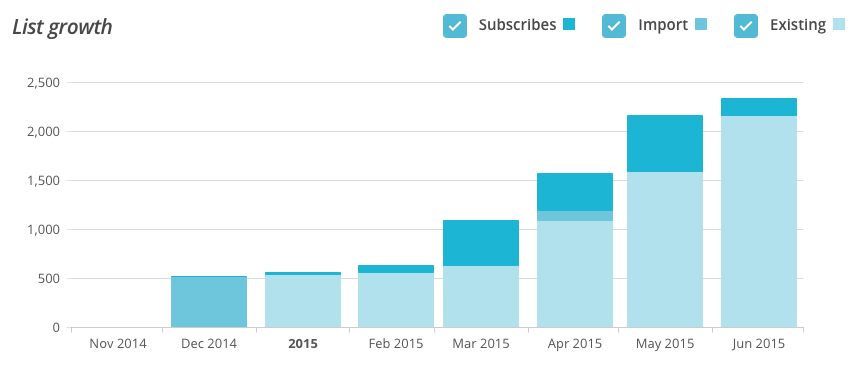
If you win the argument, and still want to create your own email campaign, (or don’t have a budget to hire out) here are a few golden rules:
- Get Permission – nobody wants to be spammed, even by you.
- Have a Plan – create an overall strategy for your campaign. What is success?
- Create a list of 100 content ideas before you start your campaign. Seriously.
- Create a compelling sign up offer to grow your list and put it front and center.
- Schedule the work, and work at least a month ahead on your emails. Skip a month if you have to.
- Add value to your audience. It not about you and your sale, it’s about them.
- Tell good stories. People like them.
- Make sure your emails are mobile responsive, because over half your readers are opening it on their phone/tablet.
That’s a long list, but the average person gets over 468 commercial messages a month. If yours doesn’t stand out, you’re just wasting time.
The average person gets over 468 commercial messages a month. If yours doesn’t stand out, you’re just wasting time.Share Ken Mahar’s Advice!
 Nichole Elizabeth DeMeré, GrowthHackers, Product Hunt, and NicholeElizabethDeMere.com
Nichole Elizabeth DeMeré, GrowthHackers, Product Hunt, and NicholeElizabethDeMere.com
When running an e-mail marketing campaign, you should consider Customer Success. That is:
- Are your subscribers your ideal customers?
- What are their desired outcomes?
- What about your e-mail(s) will help your clients become more successful with your product(s) or service(s) to accomplish those desired outcomes?
Your e-mails should not be about you, but should instead be about your clients. If they are about you (i.e. “help me with”) rather than about them (i.e. doing your research to determine their desired outcomes and then helping them reach them), your e-mail campaign will not achieve optimum results.
Your e-mails should not be about you, but should instead be about your clients. Share Nichole Elizabeth DeMeré’s Advice!
 Kevan Lee, Buffer App
Kevan Lee, Buffer App
One of the more common email problems I’ve personally encountered is placing a bit of undue pressure on myself to come up with the perfect subject line.
What I’ve learned is that email can be amazingly effect if you build a quality relationship with your recipients – share useful stuff, don’t share it more often than you personally would want to hear from someone, and make it easy for the recipient to act on the email (big buttons, clear CTAs, etc.).
I’ve come to believe that the “From Name” of your email campaigns is a quite underrated aspect of your open rate and email success. When people see that they’ve received an email, they first check who it’s from, and that goes a long way toward helping decide if it’s worth opening or not.
Have fun sharing useful stuff with your list, and you’ll be successful.
The “From Name” of your email campaigns is a quite underrated aspect of your open rate and email success. Share Kevan Lee’s Advice!
 Olivia Raymer, Early Bird Strategy and Powered by Tofu
Olivia Raymer, Early Bird Strategy and Powered by Tofu
One of the most common email marketing problems that I hear from clients is not knowing where to start — where to focus their time and energy — to see results from email marketing. With endless case studies and the latest marketing tactics to read about, it’s easy to forget about the bigger picture. Performing an audit and creating an email marketing strategy are two big pieces that I help clients with. However, a couple strategies I implement right away for clients when it comes to email marketing is setting up baseline metrics and a testing framework. Here are two tactics you can use to get started:
1. Start using Google Analytics and set up a Goal for email subscribers. What I love about Goals in Google Analytics, is that you can implement it on your own, without programming or technical help. Here’s how. Why should you care about this? Because it tells you where to focus your efforts! If you have an average of 5 newsletter subscribers per day from both the Social channel and the Referral channel (Facebook, Twitter etc.), but the Goal Conversion on the Referral channel (guest posts, inbound links etc.) is twice as high (meaning people are 2x more likely to sign up for your newsletter if they arrived via Referral than if they arrived via Social) then you know something is working better on the Referrals – translation: they’re more qualified leads. Then you can dig deeper into who/why/where etc.
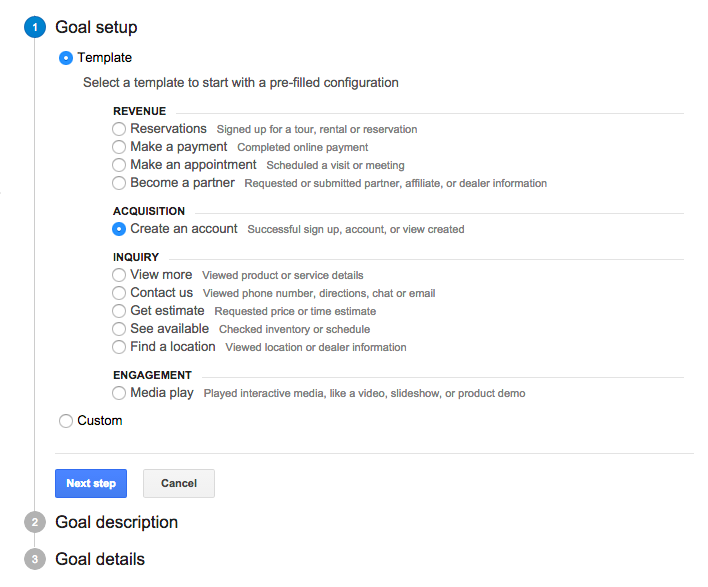
2. Establish baselines, so you know if anything you’re doing is actually “working”. Many of my clients come to me with no real baseline knowledge of what’s working and what’s not. They’re not happy with the results of their efforts, but they also aren’t tracking much beyond looking at Reports in their email marketing software service, so it’s more just a feeling (“sales didn’t seem to go up much after that email send” etc.). When you have a place to track your metrics, and make it a part of your weekly or even monthly routine, you’ll know simply by looking at the metrics if it’s “working” or not (“looks like our Open Rate was higher than average this week, which resulted in more people seeing and clicking and ultimately buying so we made $1,700 more than we usually do from email marketing this week!”). When you know where you’re starting from, it’s much easier to know if you’re actually making progress!
After you have these two pieces in place, it makes the process of improving your email marketing much simpler: Plan >> Implement >> Measure >> Repeat.
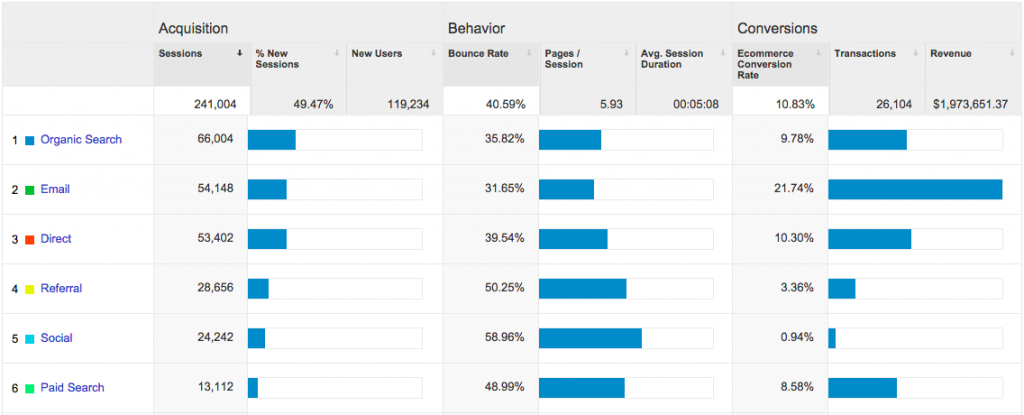
Establish baselines, so you know if anything you’re doing is actually “working”. Share Olivia Raymer’s Advice!
 Lincoln Murphy, Sixteen Ventures (Also came up with #BreadABandName)
Lincoln Murphy, Sixteen Ventures (Also came up with #BreadABandName)
The biggest and most common problem I see is that businesses don’t email their prospects and customers frequently enough.
I often hear that they don’t want to seem too “salesy” to prospects and they don’t want to “bother” customers, so they rarely send email. The ironic thing is that – in an effort to avoid bothering and being salesly – when they do send emails, to keep from being spammy they send overly-designed newsletters that are all about their product, their accomplishments, them, them, them.
So I agree that you shouldn’t bother your customers or seem too salesy with your prospects… but that doesn’t mean that you shouldn’t send them emails. Those are two very different things.
You should send emails to your prospects and customers; the key is make sure that what you send is awesome content (or links to awesome content) that helps them achieve their Desired Outcome. For prospects, it should help them whether they ever buy your product or not (though if they do buy your product, achieving that result will be easier/faster/cheaper, right?). And for customers, it should help them achieve their Desired Outcome both within the context of your product (which drives a deeper level of satisfaction in your product) and beyond the product (bridging any Success Gap that might exist).
Once you have useful content for your prospects and customers (and have them properly segmented in your list since customers have a different relationship with you than prospects), you should send on a more aggressive cadence than you’re initially comfortable with. This is a great example of a situation where getting out of your own way – putting away your internal biases about email – can pay dividends.
The reality is you can always throttle back your cadence to something that’s more comfortable based on both qualitative (a lot of people are telling you it’s too much) and quantitative (the data shows something isn’t working) feedback. But if you start out with the mindset that you don’t want to bother prospects and you want to hide from your customers, you will miss opportunities, guaranteed.
Once you have useful content for your prospects and customers, you should send on a more aggressive cadence than you’re initially comfortable with. Share Lincoln Murphy’s Advice!
 Ellie Mirman, Toast and EllieMirman.com
Ellie Mirman, Toast and EllieMirman.com
One of the biggest mistakes I see marketers making in their email marketing is focusing too much on automating their marketing instead of increasing the potential value they can offer to their recipients. By automation, I mean largely building out complex, segmented series of emails – something that has become so popular there are whole roles dedicated to it.
Meanwhile, marketers may be better off using that headcount to hire someone who can create a valuable, educational offer – in other words, something that is free and not your product but is still tied to the benefits you provide and tailored to your audience. The offer can have the biggest bearing on whether or not your email marketing is effective.
Hire someone who can create a valuable, educational offer; in other words, something that is free and not your product Share Ellie Mirman’s Advice!
 Nate Wright, Small Biz Triage
Nate Wright, Small Biz Triage
“Nobody cares about my emails!” (Translated: few opens but even fewer clicks/replies)
The solution? Stop being so boring. Sounds overly simplified, but it’s entirely true. Three quick ways to become more interesting to your subscribers:
- Get Specific – This is the easiest way to beat the boring out of your emails. Specific details give your recipients handholds in the interactions … something familiar to grab onto. “Our event last week was fantastic” >>> “Last week’s hang was EPIC – standing room only, recycling bin overflowing, and a handful of vodka tonic hangovers.”
- Stop Selling – Seriously, you should stop selling so much. I usually only sell every 3-4 emails, and keep my clickable links to 3 max regardless of intent.
- Get Human – Change the ‘From’ name to something human ([email protected] >>> [email protected]) , add human lingo (“Register Now” >>> “Snag your Seat”), keep your content focused on the human impact stories of your product/service/cause (“Here’s our boring list of features” >>> “So there I was, eviction notice on the door, stomach grumbling, nursing a boxed wine hangover …”)
Nobody cares about your emails? Stop being so boring! Share Nate Wright’s Advice!
 Rolando Rojas, Elliptic Marketing
Rolando Rojas, Elliptic Marketing
There are two questions I get from almost all my clients at some point:
1) How do I get more subscribers?
Building a list of email subscribers is challenging for everyone, but it’s especially harder for a business setting up their email list for the first time. My advice to clients is: offer your customers something they want in exchange of their email addresses. This can be anything including coupons, guides, exclusive access to content, or product information.
2) What is the best time to send emails?
Timing is an important factor affecting open and conversion rates. After having analyzed hundreds of thousands of emails, our agency reached the conclusion that the best time is when your subscribers can read your email right away. Most precisely, during natural day breaks such as right after waking up, during lunch, and early and late evening. This works especially well for retail offerings. If you want more details, you can read our complete analysis (including best days, and other considerations) our Online Marketing blog.
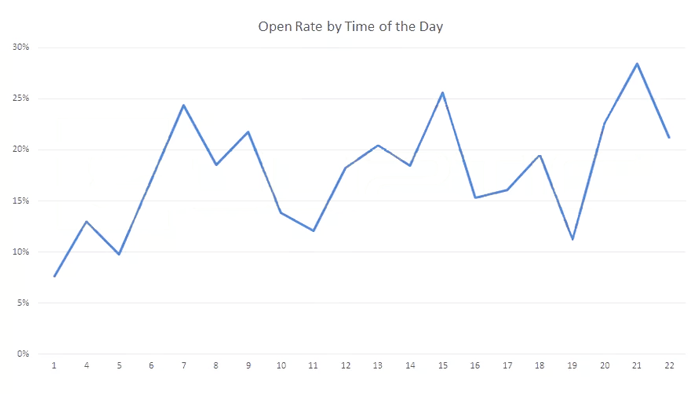
The best time to hit SEND is when your subscribers can read your email right away. Share Roland Rojas’s Advice!
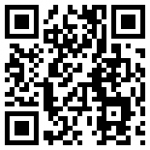 Carl Wood, CWbyDesign
Carl Wood, CWbyDesign
1. Subject Line
This is, without doubt, the most important aspect of your marketing email.
You can spend 100s of dollars on your email design and hours crafting your copy, but if the subject line isn’t captivating, no one will see it.
20% of your emails will be opened, this can be increased by another 10% by using a interesting subject line and loose a similar amount if it is seen as boring or ‘spammy’.
Subject lines show be interesting, relevant, may be introduce a little intrigue.
My best ever performing subject line – “I apologize…”
A fantastic 51% Open Rate … But use this with caution – using this a second time two months later didn’t have the same effect.
MailChimp can ‘split test’ two subject lines and automatically select the best performing subject line and send the remaining emails to the best option.
2. Call to Action (CTA)
Why are you sending your email? What are you trying to achieve?
An email should always have a purpose (Buy Now, Click to Website, Enter Details etc.)
Your CTA should always be very clear, split test different colored buttons (yes it can make a difference), and maybe try different wording at different points in your email (Click Here for More Information, Arrange a Call Back, Buy Now).
3. Responsive Emails (or Mobile Friendly Emails)
The vast majority of emails sent are not Mobile Friendly.
Over 50% of traffic to websites and over 50% of clients opening emails are now using mobile devices (you can find this data from Google Analytics). Therefore all emails MUST be Mobile Responsive.
If the text is too small, buttons difficult to press and navigation confusing, then clients will not click through to you website. Mobile Responsive Emails will change depending on the size of screen, making the email easy to read, navigate and action.
4. Email Designs and Templates
Experts are split on the benefits of using an HTML Image/Color Rich Email over Simple Text Emails.
Currently my experience demonstrates better results from HTML Emails.
I would recommend branding your email with company colours and logos. Copy the familiar look and feel of your website and have clear sections, rows and columns.
Most of the common platforms provide editable email templates and most this can be achieved on these platforms if you have the time and knowledge of how to do this, otherwise you can have an editable email template built for your company by an email designer.
Please note:
Designing an Email Template is not the same as designing a Website. Do not use your Web Designer unless they have proven experience of designing emails, as they are very different in construction. Websites are also very forgiving of poor coding, some email platforms are not as forgiving.
5. Preview Text
This is almost as important as the subject line. However this is often overlooked by email designers.
Most Smartphone and Tablets preview the first few lines of the email, so why not make use of this facility and design this element into your email.
At the very top of your email (above your logos and header image) insert 1 or 2 lines of preview text to further entice the reader to open your email.
You can spend 100s of dollars on your email design and hours crafting your copy, but if the subject line isn’t captivating, no one will see it. Share Carl Wood’s Advice!
 Ben Levesque, Webrunner Media Group
Ben Levesque, Webrunner Media Group
One of the problems we hear most often from clients when it comes to email marketing is how to increase the level of engagement (opens, clicks, forwards) with subscribers all the while keeping marketing costs low.
One very effective way to do this is to clean your list often. Purchased email lists or lists that weren’t obtained via a double opt-in process will almost always have a lower level of engagement than a well grown, organic list.
If you have a large list, get many new leads per day, or offer something free in return for subscribing, you might benefit from cleaning your list every now and then. This will keep freebie seekers and uninterested subscribers off your list, lowering your marketing costs (as most email service providers charge based on list size) and leading to better results across the board.
Purchased email lists or lists that weren’t obtained via a double opt-in process will almost always have a lower level of engagement than a well grown, organic list. Share Ben levesque’s Advice!
 Joe Stych, Zapier and JoeStych.com
Joe Stych, Zapier and JoeStych.com
A lot of small businesses think that everyone on their email list fits the same mold. Remember that each customer has a different reason for doing business with you — at Zapier, for example, they could be automating any of more than 450 apps. Your email marketing will be a lot more effective if you send relevant information to targeted groups. For example, you could send popular product suggestions to new customers, and coupon codes to loyal patrons.
You don’t need to have an Amazon-level recommendation engine to send targeted emails, either. Start by segmenting on a few pieces of information, like how often a customer buys something from you, what they buy, or demographic information like where they live. Even small levels of personalization can increase the effectiveness of your campaigns.
You don’t need to have an Amazon-level recommendation engine to send targeted emails Share Joe Stych’s Advice!
 Nicola Devine, Tanker Creative
Nicola Devine, Tanker Creative
One of the most common email marketing problems I recognize is the very basic one of making the time to get them out!
It’s really important for businesses to be consistent with their campaigns and to send them, at the very least, every six months. This ensures their email address list doesn’t go stale or that people forget they’ve subscribed and hit the dreaded spam button.
The solution is to either work with a MailChimp Expert who will manage your campaigns, content, and reporting. This is something that I do from a very involved level starting at frequency and content strategizing through to the less involved Skype meeting and once-over to ensure content is optimized before the client sends it out.
Alternatively, diary those suckers in at a reasonable frequency so you’ve got that time allocated to do them yourself.
It’s really important for businesses to be consistent with their campaigns Share Nicola Devine’s Advice!
 Josh Michael, About.Me/JoshMichael
Josh Michael, About.Me/JoshMichael
The biggest mistake DIY email marketers make is using email as a selling tool. It isn’t… it’s a relationship building tool.
Just like having effective social media efforts, your emails should invite your customers into a conversation about their problems and challenges. Once you do that, it’s a natural transition into talking about your product.
Before the direct response folks string me up for saying that… the second biggest mistake DIY email marketers make is being too romantic about the emails they write. Just because you wrote it, doesn’t mean it’s good (or that your customers give a sh*t). Let the data tell you what’s good and what resonates with your customers.
There’s a simple solution for both of these problems: build a plan that is responsive to your customer feedback.
If you only send emails when sales are low or when you realize you haven’t sent one in a while, you’re doing it wrong. Instead, decide what you think would be helpful for your customers and then validate that assumption through your engagement metrics (opens, clicks, replies, call center volume, etc.). If your engagement rates are not increasing over time, change your message.
If you only send emails when sales are low or when you realize you haven’t sent one in a while, you’re doing it wrong. Share Josh Michael’s Advice!
 Mickie Kennedy, eReleases
Mickie Kennedy, eReleases
“How do I get more subscribers?”
“What’s the best time of day to send an email?”
“How do I increase my click-through and engagement rate?”
Has your business answered these questions yet? If not… well, it’s not too late.
After reading through all of the great advice above, I would like to add:
Collect all the data you can and do what works for you based on that data. Most email platforms have built-in analytics for reading into elements like click-through and open rates. But don’t forget to analyze your inbound web traffic for a full week after you’ve sent out your email, too; while most of the impact will be seen/felt right away, you’ll also recognize some lingering increase in traffic days after you hit SEND.
In other words, listen to all of the expert advice you possibly can, but in the end the only people you should really be listening to are your customers. They’ll tell you what works with their clicks, their opens, their visits, and, in the end, their dollars.
Listen to all of the expert advice you possibly can, but in the end the only people you should really be listening to are your customers. Share Mickie Kennedy’s Advice!

